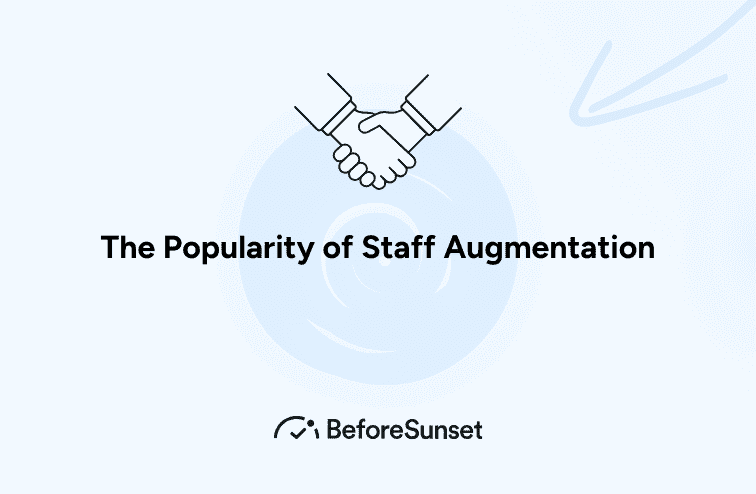Staff augmentation is a widely practiced approach, with the global staffing industry, a major provider of such talent, supporting an estimated annual spend of $490 billion. Freelancing, a longstanding method of staff augmentation, has gained recent prominence due to the emergence of global freelance platforms. Currently, about 34% of workers in the US are involved in freelancing, and this figure is anticipated to increase consistently in the coming years.
Selecting an Appropriate Staff Augmentation Model
Organizations typically employ a variety of providers to meet their specific needs for staff augmentation. The key factor in choosing the right staff augmentation model is clearly understanding your objectives and priorities. For instance, seeking an expert in a high-demand field like machine learning means that focusing primarily on cost may not be feasible. Conversely, if you require a large number of people for a task that requires minimal training, it wouldn't be practical to seek highly skilled professionals. With a wide array of resource and staff augmentation models at your disposal, it's essential to carefully consider the advantages and disadvantages of each option before making a decision.
When to Opt for Staff Augmentation: Key Considerations and Common Misconceptions
Consideration #1: Duration of the Project
Staff augmentation from sombrainc.com can effectively meet specific organizational needs, but it's not always the ideal solution. It is generally more suitable for short-term projects than for long-term initiatives spanning months or years. For longer projects, an outsourcing model might be more appropriate. Staff augmentation providers are often open to negotiating such terms.
Consideration #2: Confidentiality
Projects involving sensitive intellectual property (IP) require careful consideration when using staff augmentation. While there's a perception that in-house employees are more reliable for confidential projects, legally, a contract with a contractor is just as enforceable as with a full-time employee. It's notable that a major data breach in history involved a subcontractor, now living under asylum in Russia. This underscores the need for cautious and deliberate decision-making when using augmented staff for highly confidential projects.
Consideration #3: Learning Curve
Managing a contingent workforce often comes with challenges, partly due to misunderstandings about the necessary context. While understanding the broader organizational context is valuable, the time required for an employee to assimilate (ramp-up time) should not be overlooked. Staff augmentation might not be optimal for complex projects that necessitate extensive ramp-up time. This was evident in a case where a semiconductor company incurred significant losses due to the complexity and consequent extended ramp-up time required for the job, leading to nearly 50% of the augmented staff’s contract period being spent in learning and adaptation.
Misunderstanding #1: Staff Augmentation as a Means to Avoid Costs
There's a common belief among some hiring managers that using staff augmentation can bypass the expenses associated with full-time employee benefits. This notion is flawed. In reality, the staffing provider covers these benefit costs, which are then included in the rates charged to the organization. This misunderstanding may lead to higher expenses for augmented staff, whereas hiring full-time employees might have been more economical.
Misunderstanding #2: Higher Expense of Staff Augmentation
Another widespread misconception is that augmented staff are more costly than equivalent full-time employees. For instance, the idea that a contingent worker at $50 per hour is more expensive than a full-time employee.
This overlooks the employer's additional burdens. For example, employing a full-time employee with an annual salary of $100,000 can cost an average of 23% extra globally, and even more in some countries, due to benefits such as health insurance, 401K, and ongoing training. Considering these factors, employing augmented staff can actually be quite cost-effective.
Misunderstanding #3: Confusing Staff Augmentation with Managed Services
The staffing industry's terminology is often new and can be confusing, leading to mix-ups between staff augmentation and managed services.
Managed services are typically focused on a specific deliverable with a defined quality standard, while staff augmentation is based on a job description and operates on a time-and-material basis. For example, an augmented staff member may be hired to code for a unique application and paid hourly. In contrast, a managed services contractor would be engaged to develop the entire application, meeting certain KPIs, and compensated upon project completion.

